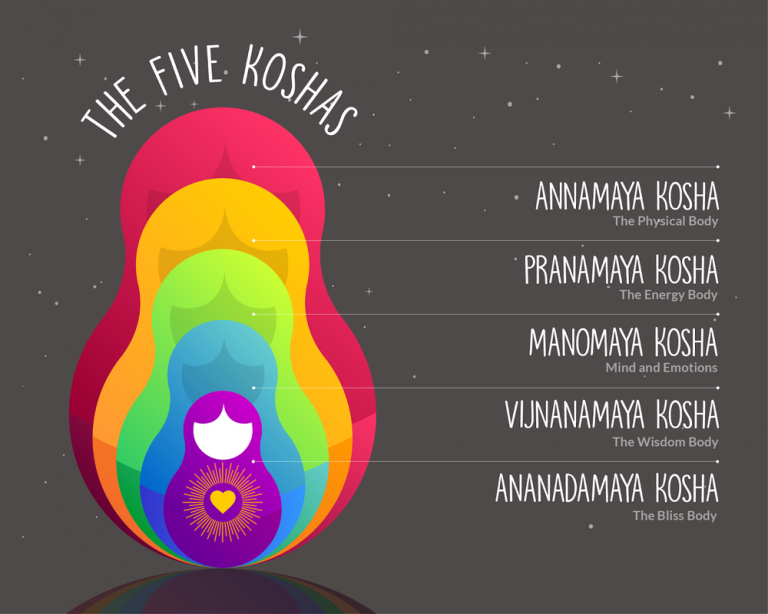Have you tried Yoga Nidra?
If you have been floating around the yoga/wellness world for a bit, you may have heard of “Yoga Nidra.” This ancient Sanskrit term translates as “yogic sleep” and in its contemporary manifestation it is a type of guided meditation designed to take you into a deep state of conscious relaxation. But the history, meaning, and power of yoga nidra is so much more than this simple description.
Historical Roots: State of Consciousness vs. Practice
The first references to yoga nidra are in ancient Sanskrit texts from over 2,000 years ago. In these texts, Yoga Nidra is described as the transcendental state of sleep of the Hindu god Vishnu.
Later texts refer to a goddess “Yoga Nidra.” It was she alone who could awaken Vishnu from his sleep.
Later still, as more important yogic texts were written, yoga nidra became synonymous with the state of “Samadhi,” or the blissful state of awareness that is the goal of yoga.
Samadhi is a state of consciousness where all sense of separateness and ego has dissolved, and all that is left is pure awareness, pure presence, pure bliss.
The definition of yoga nidra as a state of consciousness rather than a reference to a meditation practice persisted until the 1970s, when Swami Satyananda Saraswati wrote a book simply titled, “Yoga Nidra.” This book contained the first descriptions of yoga nidra as a meditation practice, and included details and techniques to help an individual reach this state of deep peace.
What we call yoga nidra today is really the preparatory practice, the methods and techniques that allow us to reach the state of consciousness that is truly yoga nidra.
The Contemporary Practice: An Antidote for Our Stressed-Out World
Today, the practice of yoga nidra typically involves lying down in a comfortable position, often supported by props like blankets and pillows, allowing the body to completely relax. The practice is led by a facilitator or through recorded sessions, guiding participants through a series of body scans, breath awareness, and visualizations. The aim is to reach a state of relaxation so profound that it facilitates physical, mental, and emotional healing.
The ancient yogis believed we have 5 layers of being, or “Koshas:”
- The physical body
- The breath/energy body
- The emotional body
- The intellectual/wisdom body
- The bliss body
In yoga nidra the guided visualizations are designed to help you journey through these layers, cleansing and healing each one with your awareness.
Benefits of Yoga Nidra:
There are SO many health benefits associated with practicing yoga nidra, but here are a few that have been documented:
- Stress Reduction: The practice of yoga nidra has been shown to reduce the production of stress hormones, promoting a deep sense of calm and relaxation.
- Improved Sleep: Regular practitioners often report improved sleep quality and a reduction in insomnia symptoms, making it an effective tool for those struggling with sleep disorders.
- Enhanced Creativity and Learning: The meditative state induced by yoga nidra has been linked to increased creativity and improved memory retention, making it beneficial for students and professionals alike.
- Emotional Healing: By accessing the subconscious mind, yoga nidra can help individuals process and release deep-seated emotions, fostering emotional resilience and well-being.
- Pain Management: The deep relaxation experienced in yoga nidra can alleviate physical pain by promoting the release of muscle tension and reducing the perception of pain.
Difference Between Yoga Nidra and Meditation
I often get asked what the difference is between yoga nidra and other forms of meditation, and my answer is to quote the yoga teacher Rod Stryker:
“In yoga nidra, relaxation is in the foreground and concentration is in the background.
In meditation, concentration is in the foreground and relaxation is in the background.”
As you can see from this explanation, yoga nidra asks nothing of us: no effort, no striving, not even concentration. It merely asks that we surrender to the present moment, and by doing so we open to the vast potential for healing, love, joy, and even bliss that is at the core of who we are.
Conclusion: Finding an Inner Sanctuary
I have been practicing yoga nidra for many years—in fact, it is the most consistent part of my yoga/meditation/wellness routine—but have I ever reached the blissful state of yoga nidra, you ask? The answer is, I don’t really know!
I have certainly had moments of deep relaxation, times of existing in a state outside of waking and dreaming, the feeling of being connected to the vast universe. But it doesn’t happen with every practice.
What does happen with each practice (for me) is relaxation, and the feeling that I am more refreshed, calm, and grounded than before I practiced.
In the fast-paced world we inhabit, taking the time to nurture our mental and physical well-being is crucial. Yoga nidra offers a profound opportunity to tap into the innate healing capacities of the mind and body. As we embark on the journey of yoga nidra, we discover a sanctuary within ourselves—a space where the turbulence of daily life subsides, leaving room for peace, rejuvenation, and a deeper connection with our inner selves.





